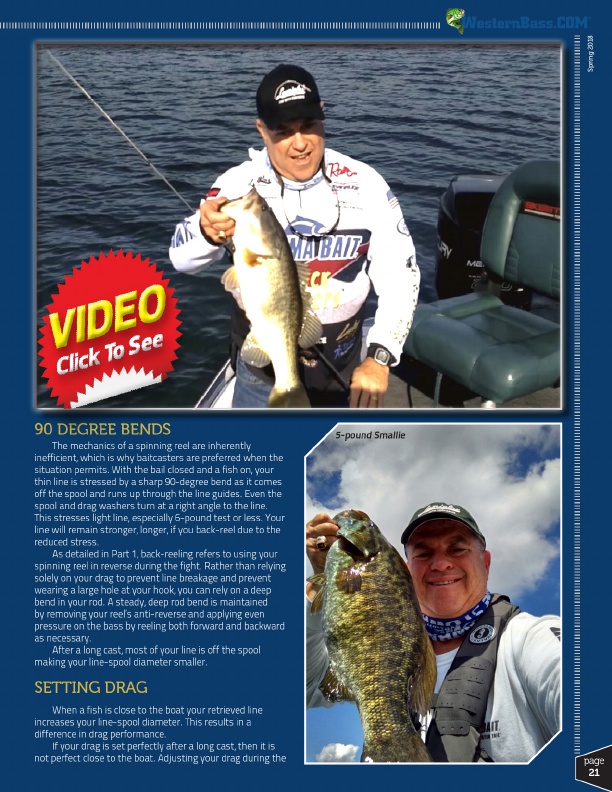
®
Spring 2018
90 DEGREE BENDS
The mechanics of a spinning reel are inherently inefficient, which is why baitcasters are preferred when the situation permits. With the bail closed and a fish on, your thin line is stressed by a sharp 90-degree bend as it comes off the spool and runs up through the line guides. Even the spool and drag washers turn at a right angle to the line. This stresses light line, especially 6-pound test or less. Your line will remain stronger, longer, if you back-reel due to the reduced stress.
As detailed in Part 1, back-reeling refers to using your spinning reel in reverse during the fight. Rather than relying solely on your drag to prevent line breakage and prevent wearing a large hole at your hook, you can rely on a deep bend in your rod. A steady, deep rod bend is maintained by removing your reel’s anti-reverse and applying even pressure on the bass by reeling both forward and backward as necessary.
After a long cast, most of your line is off the spool making your line-spool diameter smaller.
SETTING DRAG
When a fish is close to the boat your retrieved line increases your line-spool diameter. This results in a difference in drag performance.
If your drag is set perfectly after a long cast, then it is not perfect close to the boat. Adjusting your drag during the
5-pound Smallie
page
21